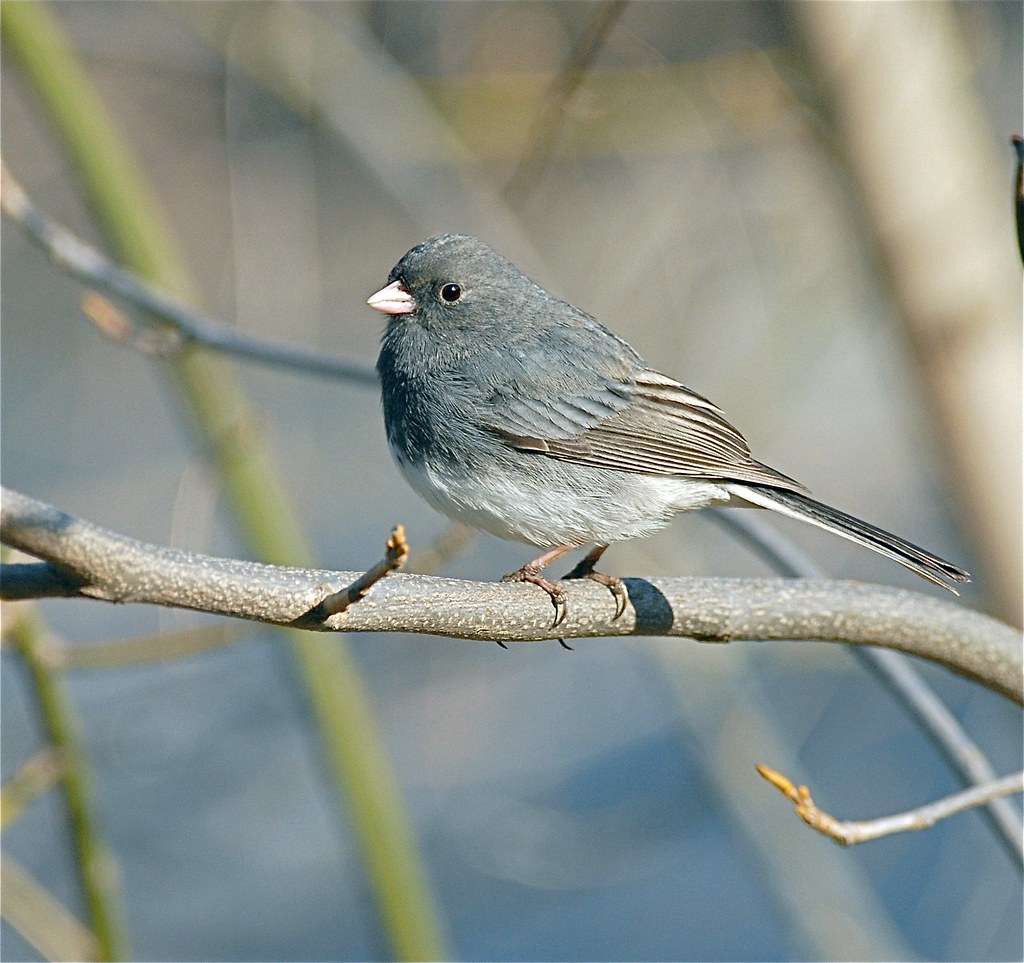North America has three billion fewer birds than it did in the 1970s and 170 million fewer slate-colored Juncos, an avian species researched by Indiana University Behavior Ecologist, Dr. Ellen Ketterson. Jesse Montoure is a graduate student in the Ketterson lab studying how light pollution affects the Junco and says the drastic drop in Juncos is partially attributed to humans’ adverse effects on ecosystems through urbanization.
The slate-colored Junco lives throughout the United States, including Bloomington and its expansive territory, makes it an excellent model species for revealing humans’ trace on the environment. Dr. Ketterson has been studying Juncos for much of her career. When she got started in the 1970s, she was interested in the relation between Junco testosterone and sex differentiation. But, with the stress of climate change weighing on many experts’ shoulders, she adjusted her research to be through a conservationist lens. Montoure explains that Dr. Ketterson is consistently at the forefront of research and even helped create the Environmental Resilience Institute, a collaborative effort by researchers in many disciplines dedicated to alleviating environmental impacts.
Her questions expanded to testosterone’s influence on behavior and migration. She observes nine subspecies across the United States and Canada, with a focus on the slate-colored Junco. Their habitat includes Alaska and Canada during warm seasons and Indiana and Virginia during the winter. Unexpectedly, some of the populations that have been migrating for thousands of years have stopped. In Virginia, one population still migrates while the other stays, despite living in the same area with the same conditions. Dr. Ketterson and Montoure want to understand the role hormones play in this phenomenon.
The most recent paper from the Ketterson lab explored hormone involvement and found that the non-migrating female juncos have significantly higher amounts of the Gonadotrophin releasing hormone (GnRH). GnRH is secreted from the pituitary gland in the brain and activates the gonads, also known as reproductive glands. Juncos are not constantly able to mate and their reproductive systems’ readiness for mating fluctuates seasonally. The progress of the birds’ reproductive processes is tested by injecting them with GnRH to see how ready they are to mate based on testosterone levels. When this test was applied to both groups, the non-migratory group expressed more testosterone and was more ready to mate.
Both birds being in the same conditions yet doing different things on a metabolic level suggests a genetic divergence between the migrating and non-migrating population, possibly leading to the slate-colored Junco becoming two separate species. This sparks a bigger evolutionary question: how does a species go from migratory to non-migratory? Montoure says the answer is likely related to the same processes that caused a drop of 170 million juncos: warming temperature and urbanization.
The Ketterson lab plans to learn more about this question by studying the birds’ geography, especially the location of their breeding grounds in Alaska and Canada. Montoure hopes that by answering these questions, they’ll be able to understand how migratory patterns are affecting the overall health of the species and their ability to migrate back. Finding these answers will contribute to a better understanding of how humans are influencing Junco migration and evolution.



